Winding willow care: planting, watering, feeding
Sinuous willow is an unusual plant, whose thin branches and trunk are curved, and the leaves are twisted, which is caused by uneven thickening of the shoots during growth. Planting a willow tree with such decorative qualities on the site will not only transform it, but also add color and exoticism at any time of the year. This tree is well formed by pruning, making it easy to give it the desired shape, for example, turning it into a stem or garden bonsai. Curved shoots are often used by florists to create compositions or dry bouquets. Blooms with inconspicuous yellow flowers. Most common in China and Korea.
Types of sinuous willow
The most popular type of willow among landscape designers is Matsudana (it is most often sold in landscaping centers and is common in many countries) and one of its forms is Tortuosa. Sometimes in stores you can see the species Erythroflexuosa, but it needs to be covered for the winter. The sinuous willow Sverdlovskaya, with an olive or dark red bark, is best adapted to the conditions of central Russia. Variations of this species: dwarf tree, the crown of which is weeping or pyramidal.
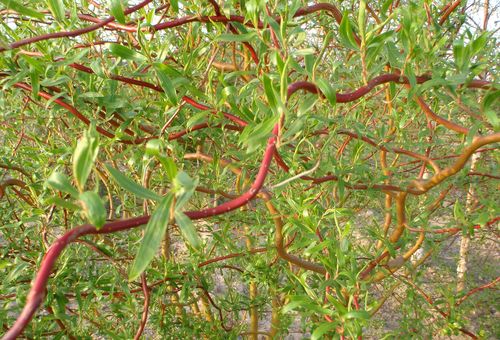
The willow has become attractive to Russian gardeners thanks to the labor of the breeder V.I. Shaburov, who has developed many hybrids that are ideal for the middle lane. They received the names of Sverdlovsk or Ural. Sverdlovsk willow varieties are cold-resistant, many of them are time-tested and have been growing in our latitudes for 50 years. They are resistant to diseases and pests, hardy and tolerate frost well. In addition, it is difficult to remain indifferent and not fall in love with the sinuous willow for its uniqueness and high decorative properties.
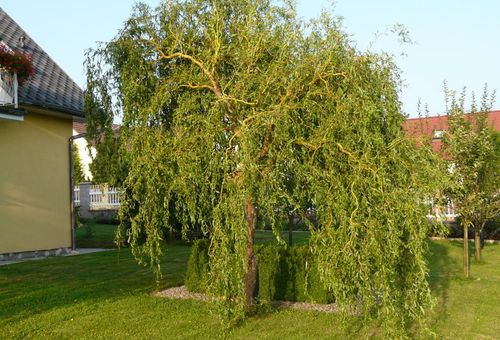
Popular varieties of Sverdlovsk selection:
- Sverdlovskaya sinuous 1 - frost-resistant variety, reaches a height of 4 meters, moderately weeping crown, brown shoots. Has a decorative appearance, high endurance, caring for it is not difficult. Propagates well by cuttings.
- Sverdlovsk winding 2 - a spreading tree, growing up to 12 meters, a pyramidal crown, curved branches. The bark comes in various shades, from olive to reddish brown. The foliage is pubescent. Easy to cut, shoots root quickly, usually without loss.
- Sverdlovsk winding 3 - tree, up to 5 meters high with a pyramidal crown, and light olive branches with a wax coating. The leaves are curved. Propagates well by cuttings, shoots can be rooted in water. But this variety often dries out the tops.
- Sverdlovskaya meandering 476 is a low winter-hardy variety that grows up to 3 meters with an oval crown and olive bark.
- Sverdlovsk winding 676 - a low tree up to 2.5 meters high, winter-hardy, weeping crown.
Cultivation and care in the open field
The advantages of this tree include not only a decorative look, but also endurance, ease of reproduction and easy maintenance. Having made the decision to plant willow on the site, especially the Matsudan species, you need to choose the right site: it must be protected from the winds, especially from the north, cultivation near the fence is permissible. Better to surround it with other tall plants. The planting of sinuous willow was originally used in landscape design to strengthen the banks of rivers and lakes, therefore, it can be planted in flooded areas.
Tip: to prevent the willow from forming a one-sided crown, there should be a lot of free space around it.
Growing Matsudana is possible on almost any type of soil, but she prefers loamy.Willow can be planted in a place where the groundwater is shallow enough because it prefers wet places. Willow will feel good on the banks of an artificial reservoir. It is better that the site is well lit by the sun. A planting hole is dug with a diameter of about half a meter and a slightly shallower depth. It is better to put a nutrient mixture of sand, mineral fertilizer and rotted manure or compost on the bottom.
Willow in a container can be planted from spring to autumn, it takes root well if you do not dry out the earthen lump. It is best to plant a plant with an open root system in early spring or mid-autumn, when there are no leaves or they have already begun to crumble. All foliage should be removed before planting in October. Maintenance during the first year consists of regular watering - about 25 liters of water per week is required. When the willow takes root, moderate moisture will be sufficient. Top dressing is done with organic fertilizers about three times throughout the season. You can apply mineral fertilizers, including superphosphate.
This tree is frost-resistant, but in especially harsh winters it can freeze slightly, therefore some gardeners prefer to additionally insulate it. Matsudan Tortuosa species can freeze during a sharp drop in temperature in May. The Sverdlovsk willow, which is sometimes sold under the guise of Matsudana, is the most resistant to sudden cold snaps.
Advice: there is a danger of overrunning, therefore, you do not need to cover the willow too tightly with dense material during wintering.
Pruning and reproduction
The care of sinuous willow includes annual pruning and crown formation, as it thickens very quickly. Willow looks very impressive on a trunk. Some gardeners believe that this tree should be cut under a stump every spring in order to avoid freezing and achieve a bush shape. For those who like growing bonsai, sinuous willow is a real gift. It can be bent as you like and even artificially aged.
There is nothing difficult in reproduction of this plant - usually 100% of cuttings are rooted just in a jar of water. The tree grows very quickly and the growth will still have to be removed - there will be no shortage of planting material. You can stick the branches into the swampy ground: this way they are also able to take root, and there is practically no need to care for them.
Willow loves moisture, so you need to make sure that the soil does not dry out. It is better to take not too long shoots for cuttings. The plants grown from cuttings grow slowly during the first two years of life, but from the third, their growth rate doubles by 2 times. Such young trees make a good hedge.
Diseases and pests rarely affect this plant. After a wet summer, it can develop a fungal infection, resulting in black dots on the leaves. For treatment, you need to treat the tree with copper-containing preparations. Of the insects, the tree suffers most from butterflies, beetles or aphids.
The sinuous willow is not just decorative, but also useful:
- From its leaves, you can prepare a healthy tea that has tonic properties.
- A decoction of the bark is used as an antipyretic and anti-inflammatory agent.
- Brittle hair is treated with a weak bark solution.
- When planted near a road, this tree is capable of trapping about 40 kg of dust in one summer.
- Willow is able to absorb heavy metals, clearing the space around it.
Conclusion: sinuous willow is a highly decorative plant, unusual in shape and attracting the attention of every gardener. Caring for it is very simple, in the first year you need abundant watering, but then it can be reduced. The tree is fed three times a season with organic matter or mineral fertilizers.
The most common types of sinuous willow: Matsudana and hybrids of the Sverdlovsk selection. The latter are frost-resistant, hardy, and therefore are better suited for central Russia.Reproduction of this plant will also not cause problems - cuttings root easily in water or wet soil.
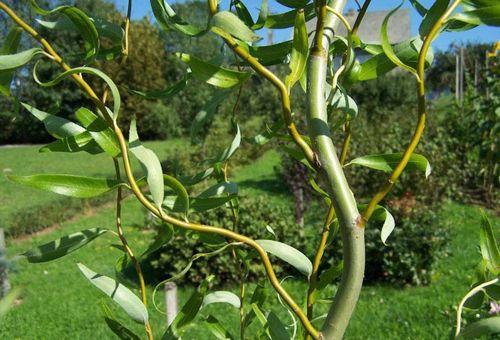
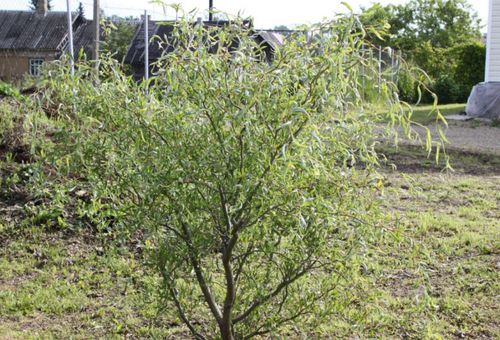
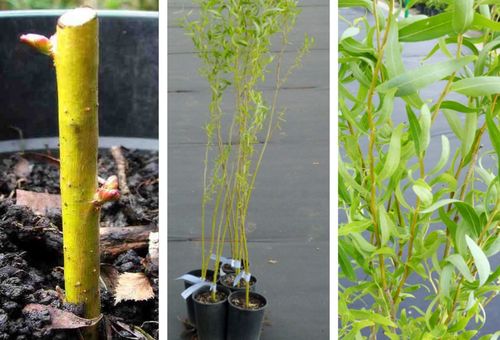
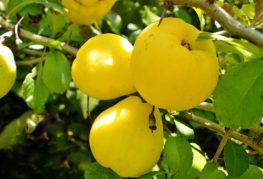

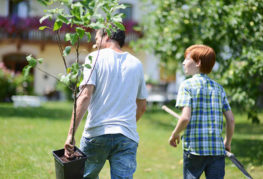
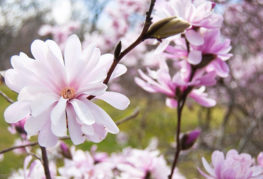
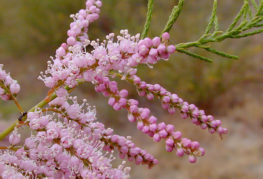
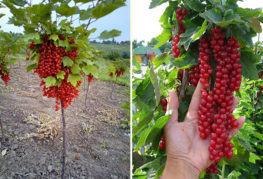
and will be published shortly.